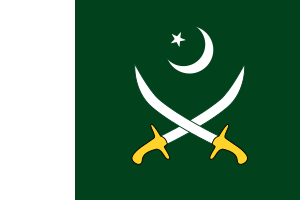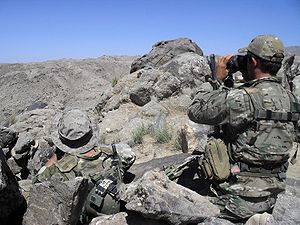 |
| Former Senior Airman David Sharpe embraces his dog Cheyenne at their home Sept. 22, 2011, in Arlington, Va. Sharpe is the founder of Pets 2 Vets, a nonprofit organization that pairs shelter animals with veterans who live with post-traumatic stress disorder. Sharpe credits Cheyenne with saving his life. (U.S. Air Force photo/Tech. Sgt. Mareshah Haynes) | | | |
ARLINGTON, Va. – When former Air Force Senior Airman David Sharpe adopted a pit bull puppy from a rescue shelter 10 years ago, he thought he was saving her life. In a dramatic twist of events just a few months later, she ended up saving his.
Sharpe was on the verge of taking his life.
As he sat on the kitchen floor of his apartment with a .45 caliber handgun in his hand — “ready to finish the fight with the demons that followed me back from the war” — that pit bull puppy, named Cheyenne, sat down on the floor next to Sharpe and licked his ear. It made him laugh — something he hadn’t done much. Something clicked for him, he said, and his reason for living became clear at that moment: to care for Cheyenne.
Sharpe had been suffering from an undiagnosed case of post-traumatic stress disorder and depression. As a security forces airman stationed at Langley Air Force Base, Va., he went on his first deployment in December 2001 to Saudi Arabia, where he came face to face with a Taliban sympathizer who would change his life.
Sharpe said he had been working with the man for a while, though he was mostly quiet and kept to himself. One day he found the man laughing hysterically in the guard shack and asked what was so funny. The local man pointed to a picture in an Arabic newspaper of the planes crashing into the twin towers and he said he praised Allah the day this happened. Sharpe said he got angry with the man and told him to stop talking like that. Then he turned to walk away.
“I turned around and I heard a couple of ‘clicks’ and ‘clacks’ and this little guy is pointing his [submachine gun] right at me,” Sharpe said. “I froze for a few seconds, but it felt like days. I looked at him and pulled my M-16 up and charged it. We were yelling at each other and then a [British] guard came in and pointed his weapon at the guy, and then a French guard came in the side door and pointed his weapon at the British guard.”
Once the incident de-escalated, Sharpe had to recount it to his unit leaders numerous times. With the official procedures for debriefing such an incident completed, Sharpe was referred to the chaplain.
“I went and saw the chaplain, and that lasted for all of about two minutes,” Sharpe said. “[The chaplain said], ‘Tell me what happened, Airman Sharpe.’ I said, ‘I don’t even want to talk to you right now, sir. No offense — I just want to be left alone.’”
Sharpe said the chaplain told him to come back when he was ready, but Sharpe never went back. He finished the rest of his deployment without incident and returned home to Virginia, but things did not go back to “normal” for Sharpe.
“I started having nightmares about this guy taking his weapon and pointing it in my face,” he said. “I had visions of the bullet going through my head and coming out the other side. I woke and I started crying, and then I started calling myself a bunch of names and saying to myself, ‘Suck it up.’ ‘What’s wrong with you?’”
Sharpe said he began having violent outbursts with his family and friends over the simplest of questions, especially about his deployment. He began starting fights with strangers and even turned on his friends. One friend in particular continued to reach out to Sharpe.
“One of my friends came to check up on me and said, ‘Hey, there’s this pit bull rescue I want to check out. Do you want to come with me?’” Sharpe said. “I said, ‘Absolutely. I want to get a fighting dog — I’m a fighter.’ So I went, and there were about eight puppies running around in a pen, and all of them were all over me. But there was one that was off in the corner, and that was the one I chose.”
 |
| Cheyenne belongs to former Senior Airman David Sharpe, the founder of Pets 2 Vets. Sharpe adopted Cheyenne from a pit bull rescue when she was just a few weeks old. She has been with Sharpe for more than 10 years and has helped him cope with depression and post-traumatic stress disorder. (U.S. Air Force photo/Tech. Sgt. Mareshah Haynes) |
Sharpe said when he took Cheyenne home he felt better immediately. Though he was happier since he had gotten his new companion, he said, he continued to have violent outbursts. During one outburst in the kitchen of their apartment, Cheyenne watched and waited for Sharpe to calm down.
“I picked her up and took her back to my bed, and I just lost it — started crying, bawling,” Sharpe said. “She didn’t say anything. She inched her way up [to my face]. She knew something was wrong. She just started licking the tears off my cheek. It makes you laugh, it tickles, and I immediately starting feeling relief, because I didn’t have anyone [saying] to me, ‘How do you feel now? Are you glad you got that off your chest?’ She never asked. I told her on my own terms.”
Sharpe didn’t realize it at the time, but he and Cheyenne were engaging in a form of pet therapy. She would be his confidant on the road from that lonely night on the cold linoleum floor when he considered suicide to being a champion for other veterans with the same struggles.
“Pet therapy helps people who have
PTSD to reconnect with the world,” said Megan O’Connell, a clinical nurse specialist at Kimbrough Ambulatory Care Center at Fort George G. Meade, Md. “It helps to create a routine, a sense of connection, when you have to feed the dog and make sure the dog is watered, that it has all of its shots. It helps you. It forces you to become part of this world and to start to reintegrate.
“Especially dogs — they react to body language,” O’Connell continued. “If your body language is stressed, they want to come over, because they want you to stop being stressed, so they pay a lot of attention to you. It makes you feel like they care and they’re listening, and that makes you feel comfortable to want to open up more.”
In the meantime, Sharpe separated from the Air Force after six years of service. A few months later, after watching a TV news special about service animals, Sharpe came up with the idea to pair up shelter animals with veterans living with PTSD. He called the program Pets 2 Vets.
Sharpe took $3,500 of his personal savings to get started. Unlike other programs, P2V provided companion animals to veterans versus other programs that provided service animals to perform physical tasks for disabled veterans.
Initially, Sharpe would pick up veterans who were recovering at Walter Reed Army Medical Center in Washington, D.C., and take them to local shelters to interact with the animals. As the program grew, P2V provided an avenue for veterans to adopt their own companion animals as well as give veterans at Walter Reed an opportunity to visit shelter animals during their recovery.
About a year after Sharpe founded P2V, he reached a milestone. He was finally ready to talk to a human about his experiences while deployed. After meeting with doctors from the Veterans Affairs Department, Sharpe was diagnosed with PTSD and depression — five years after he separated from the military, and nine years after the incident in Saudi Arabia.
“One of the problems with PTSD is that it really destroys people’s trust,” O’Connell said. “They feel disconnected. One of the things a dog can do is help to be that bridge to trust. Unless you’ve had a bad experience, most people have very positive feelings toward pets, so people are more willing in a lot of ways to talk to the dog or relate to the dog than they are to another person, especially if they’ve been through a traumatic experience.”
Although the battle with PTSD is never over, P2V has placed more than 50 shelter animals with veterans, and Sharpe is now married to his long-time friend, the former Jenny Fritcher. Later this year, David, Jenny and Cheyenne will welcome a baby boy into their family.
“I always say Cheyenne brought me to Jenny,” Sharpe said. “If it wasn’t for Cheyenne, I wouldn’t have this beautiful wife and beautiful life. She saved me.”
 |
| Former Senior Airman David Sharpe and his wife, Jenny, share a family moment with their dog Cheyenne outside their home Sept. 22, 2011, in Arlington, Va. Sharpe is the founder of Pets 2 Vets, a nonprofit organization that pairs shelter animals with veterans. Sharpe came up with the idea for P2V after he realized how Cheyenne’s companionship helped him deal with traumatic events he went through while deployed to Saudia Arabia. (U.S. Air Force photo/Tech. Sgt. Mareshah Haynes) |
By Air Force Tech. Sgt. Mareshah Haynes, Defense Media Activity
From www.defense.gov
photos hi-res versions:




































 Washington Time
Washington Time Kabul Time
Kabul Time London Time
London Time







